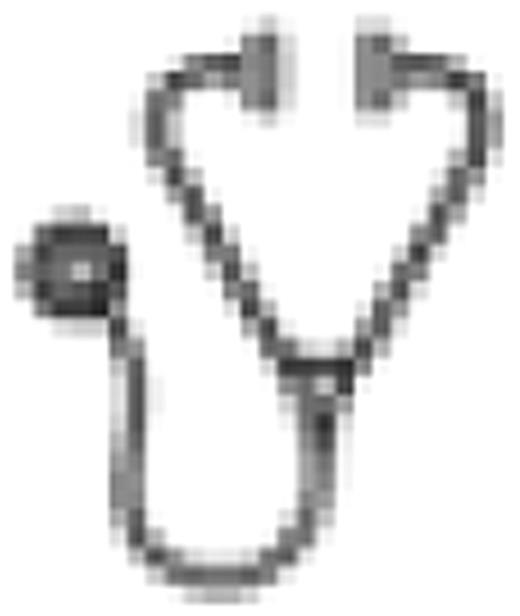Abstract
Abstract 4488
Definition of leukemia remission requires the lack of disease markers at sub-microscopic level. This is highly important after a potentially curative approach as allogeneic hematopoietic stem cell transplant (HSCT), where early detection of relapse at molecular level may lead to modulation of immunosuppressive therapy or donor lymphocyte infusion (DLI). In AML various approaches has been used to define MRD, but still the majority of AML cases do not have a useful and sensitive MRD marker. Over-expression of Wilms' tumor gene 1 (WT1) in leukemic blasts has been reported in >80% of AML and >40% of MDS. Physiologic hematopoietic stem cell compartments also express WT1, however, a ‘malignant’ WT1 expression can be clearly distinguished based on quantitative detection methods such as semiquantitative RT-PCR. Quantification of WT1 expression levels can detect frequencies of leukemic cells in bone marrow (BM) and peripheral blood (PB) as low as 10-3 and 10-5, respectively. Therefore WT1 expression levels provide a new marker for leukemic blast cells regardless of the type of leukemia especially in the relevant percentage of patients that lacks a specific molecular marker of their disease and thus may be a useful marker MRD and may predict the relapse after allogeneic HSCT.
We measured quantitative expression of WT1 at diagnosis, before and after allogeneic transplant monthly for the first six months and then every three months. The quantitative assessment of the WT1 transcript amount was performed by real-time quantitative polymerase chain reaction (RQ-PCR).
Our study included 19 AML and 6 MDS pts who underwent allogeneic HSCT in our Institute between 12/2007 and 6/2009. Median age at diagnosis was 49 years (range 22-68). Bone marrow samples at diagnosis showed a WT1 median expression level of 5851.66 copies (range 77.98-31203.57). Fifteen pts (60%) had a specific cytogenetic marker that could allow MRD monitoring. At HSCT 17 pts (68%) were in CR, 5 (20%) had a refractory or relapsed disease, while 3 (12%) were transplanted upfront. Six pts (24%) received grafts from a matched sibling donors, 6 (24%) were transplanted from a matched unrelated donor (MUD), 10 (40%) from a familiar haploidentical donor and 3 (12%) received a cord blood unit. Myeloablative conditioning regimen consisted of Treosulfan 42 g/sqm, Fludarabine 150 mg/sqm, ALG 30 mg/kg and Rituximab 500 mg (last two drugs only for alternative donors). After HSCT a rapid decline of WT1 expression levels was observed in all pts that obtained or maintained a condition of CR. Two pts (8%) relapsed and both had an increase in WT1 expression before relapse. In the first relapsed pt, analysis of WT1 showed a dramatically increase between pre transplant level and day +28, while STR showed 100% donor chimerism. Relapse occurred on day +43, still on IST, with 69% of blast at AM evaluation and 40% donor chimerism. This pt was successfully reinduced with chemotherapy followed by allogeneic PBSC infusion without GvHD profilaxys obtaining a rapid reduction of WT1 (43.66). The pt developed GvHD that required a new IST, confirming a strong immune-surveillance of HSCT. The second pt was still on immunosuppressive treatment (IST) at the time of relapse (+136). WT1 in BM on day +30 was 30 cp and then increased gradually to 167 and 190 cp on day +67 and +102, respectively. Cytogenetic analysis and STR chimerism still showed a cCR with 100% donor chimerism. At relapse AM showed 10% blasts, WT1 expression level was 7447 cp with >95% donor chimerism. IST was discontinued and one month later WT1 expression level decreased to 1640 with >95% donor chimerism. In this situation we reasoned that DLI was the best available treatment. The total dose of donor T cell infused was 5 ×105 CD3/Kg. This procedure allowed an immune-mediated leukemia control with reduction of WT1 (1.58), cCR and 100% donor chimerism.
These data show that WT1 may be useful as a non-specific leukemia marker for monitoring MRD in AML and MDS after allogeneic HSCT and should enable the detection of early relapse allowing intervention at a more favourable stage than at overt relapse. We observed a complete concordance between WT1 expression levels and status of AML before and after allogeneic HSCT. Based on these results cases with increase of WT1 levels after HSCT and without GVHD may be candidate to immune intervention such as discontinuation of immunosuppression and/or DLI.
Bonini:MolMed S.p.A.: Consultancy.
Author notes
Asterisk with author names denotes non-ASH members.

This feature is available to Subscribers Only
Sign In or Create an Account Close Modal